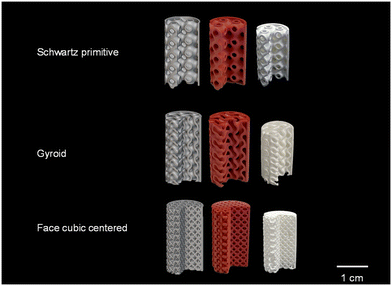Luca Mastroianni, Vincenzo Russo, Kari Eränen, Martino Di Serio, Dmitry Yu Murzin, Tapio Salmi
https://doi.org/10.1039/D3CY01592K Catal. Sci. Technol., 2024
Abstract
3D printing, or additive manufacturing (AM), is one of the key technologies of the fourth industrial revolution (Industry 4.0) as it will transform the whole concept of manufacturing. AM enables rapid, sustainable and cost competitive production of highly complex designs. Applied to catalyst shaping, 3D printing paves the way for completely new architectures which have the potential to enhance mass transfer rates in shaped catalysts. Digital light processing (DLP) is a highly promising printing technology among the different 3D printing alternatives owing to excellent printing resolution and high printing speed. When applying DLP printing for ceramic materials, important catalyst requirements (such as the specific surface area) are often sacrificed to obtain mechanically stable parts. Herein, a novel methodology to DLP print γ-Al2O3 catalyst structures with a good mechanical stability and a high surface area is described. Introduction of active gold nanoparticles on the alumina supports was explored with different deposition methods and the catalytic activity was demonstrated in the oxidative dehydrogenation of bioethanol. The obtained results demonstrate a high potential of the method to remove all the constrains in catalyst shaping.

